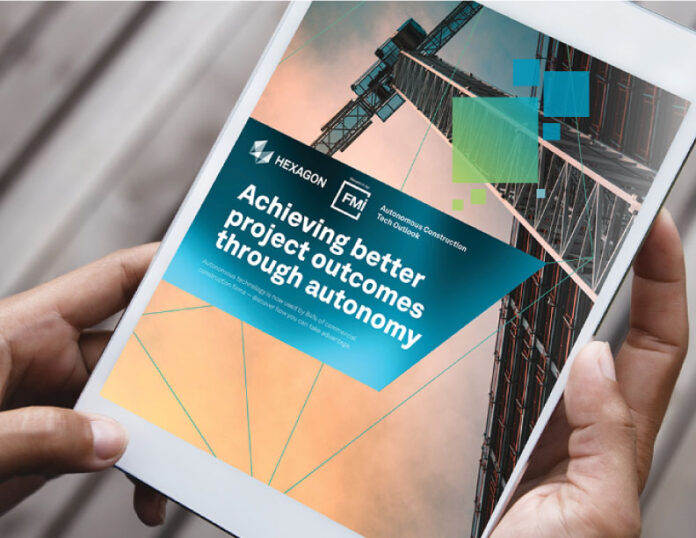Hexagon has released the first Autonomous Construction Tech Outlook, which presents a snapshot of the current state of autonomous technology adoption in the construction industry.
The study reveals that despite the strong adoption and investment numbers of autonomous technology, there is still a significant disconnect in the industry’s understanding of autonomous tech, its application, and its benefits. This reveals an opportunity for construction firms to better align their autonomous technology investments with their most pressing challenges and pain points to achieve better returns on investment.
Those surveyed included over 1,000 technology decision-makers at general contracting firms across North America, the United Kingdom, and Australia.
Here are some of the key highlights of the study:
- Eighty-four percent of respondents have adopted some form of autonomous technology in the last year to help address key business priorities and challenges, and 79% said they will be investing more in autonomous (or automated) technology in the next three years.
- The most popular applications for autonomous tech among construction firms included the following: project management (32%); workplace safety (28%); quality control (26%); surveying (26%); and vehicle operation, document management, and verification/project inspection (all at 25%).
- Among the autonomous technologies used, almost half are partially or conditionally autonomous, while the remaining 23% and 30% are split between limited autonomy and full autonomy, respectively.
- A little over half the firms surveyed plan on investing an average of $7.1 million in autonomy within the next three years — with 30% planning to invest over $10 million.
- The majority of respondents believe autonomy will be “very” to “extremely” impactful in supporting profitability (63%), sustainability (62%), market competitiveness (62%), and owner satisfaction (62%).
- Among survey respondents who stated that improving supply chain management is a top priority in the next 12-18 months, only 28% reported their companies had invested in autonomous monitoring technology.
- Thirty-seven percent of respondents found fully autonomous robotics drove sustainability benefits, yet only 17% of firms are investing in this type of technology.
Ultimately, the disparity between technology selection and business priorities represents a significant opportunity for firms to better address specific challenges and pain points through more targeted autonomous technology adoption.









